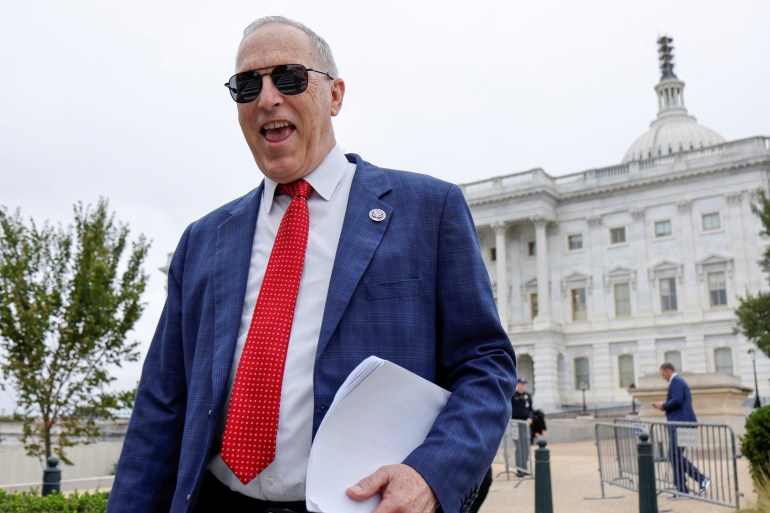It is probably no surprise that Republican infighting scuttled a stopgap measure on Friday in the House of Representatives, designed to avert a government shutdown on September 30.
That is the deadline to approve new budget legislation to fund the United States government over the next fiscal year — which starts on Sunday.
But with a faction of hardline Republicans refusing to pass any sort of legislation without massive cuts to discretionary funding, the country is now staring at a possible shutdown of all federal functions deemed non-essential.
Even those considered essential won’t get fully paid, said Justin Begley, an economist at Moody’s Analytics, although they will receive their full salaries once the shutdown is over.
“We’ve reached this point because political partisanship seems to be elevated,” Begley explained.
While the US Congress decides what is essential and what isn’t — the line is typically drawn at safety — no government funds means no government spending.
That could leave hundreds of thousands of federal workers without pay, and millions of citizens without access to programmes like nutrition assistance.
Depending on the length of the shutdown, the US economy overall could also worsen.
A two- to four-week shutdown is the most likely scenario, said Begley.
And while that would have some impact on the economy — economists differ over how bad the situation could get — there is also concern that the US’s credit rating could suffer, driving up interest rates for government loans.
Last month, Fitch Ratings downgraded US credit rating by one notch on the back of the debt ceiling crisis and political divisions. Earlier this week, Moody’s warned a shutdown would negatively affect the government’s credit: It currently lists the US as having a AAA rating, the highest possible.

Loss to the economy
Around a quarter of the US gross domestic product is government expenditure. If that spending were “severely dented”, Begley said it would have all kinds of knock-on effects on investments and consumption, affecting the economy as a whole.
For every week the shutdown persists, there could be potential losses of 0.1 to 0.2 percentage points of quarterly economic growth, according to Jared Bernstein, chairman of the White House Council of Economic Advisers.
Economists at Goldman Sachs, meanwhile, put that number down to 0.2 percentage points for each week of shutdown.
In case of a four-week shutdown, Moody’s predicts a 0.4 percentage point reduction in the GDP, but that figure is not certain as there’s a compounding effect, Begley said, which could drive that number higher.
The worst-case scenario is a full quarter shutdown. That could cause a 2 percentage point reduction in GDP growth, Moody’s estimates.
“Lost hours, wages, productivity from federal government workers … will drag down the GDP,” said Begley.
While economists expect some recovery once back pay comes in for government employees, there will be a permanent loss of hours and wages from the roughly five million government contractors, slightly half of whom are expected to be impacted by the shutdown.
A long shutdown also means fewer small business loans and fewer companies listed on the stock market. Indeed, Gary Gensler, the chair of the US Securities and Exchange Commission, urged companies that were ready to list to do so before the shutdown: If nonessential government services are frozen, the process of reviewing companies to go public on the stock market will slow to a crawl.
All of that is on top of a second month of low consumer confidence in September.
Then there’s another scenario. If the shutdown lasts the entire quarter and hits January 1, the government will be forced to make an automatic one-percent cut in discretionary spending, giving the hardline Republicans at least some of what they want.

What are the possible scenarios going forward?
At the moment, the options to avoid a shutdown are dwindling.
Each year, Congress must pass 12 appropriations bills to keep the government running — but that process is unlikely to be completed before time runs out.
In lieu of that, Congress could instead push through a stopgap measure — called a “continuing resolution” or CR — to temporarily fund the government while it continues work on the appropriations bills.
But hardline Republicans have rejected the prospect of a short-term fix.
“CRs have only made the American economy worse off,” one of those congresspeople, Andy Biggs, wrote on social media.
While Friday’s stopgap measure in the House of Representatives shot down in a vote of 198 to 232, House Democrats are pinning their hopes on a separate bipartisan stopgap that could potentially arrive from the Senate.
It is unclear, though, whether House Speaker Kevin McCarthy — the leading Republican in the lower chamber — would introduce the Senate’s bill on the House floor.
Far-right Republicans have threatened to revoke his speakership if he does.
“It is becoming increasingly clear that Republicans will bear the brunt of the blame for the shutdown, which may lower the partisan walls between McCarthy and his allies and the Democrats in the House and Senate,” said Begley.
However, it remains unclear whether the scrutiny on Republicans will translate into effective action.
“The added pressure means that a shorter two- to three-week shutdown is still possible, but heightened intraparty tensions increases the risk that the shutdown becomes a bit more lengthy,” he added.
